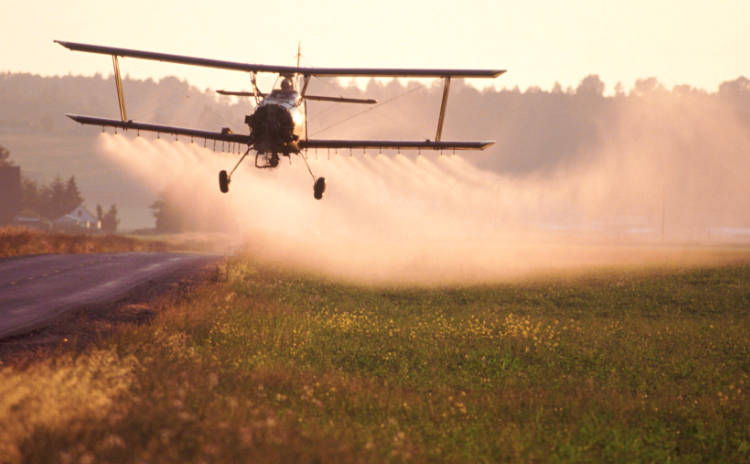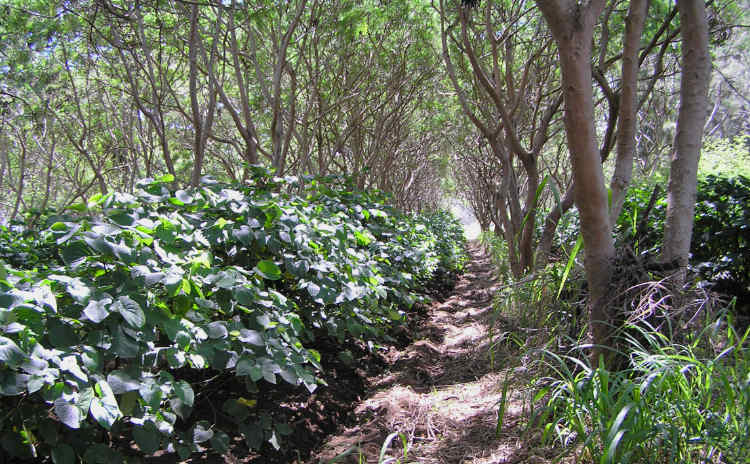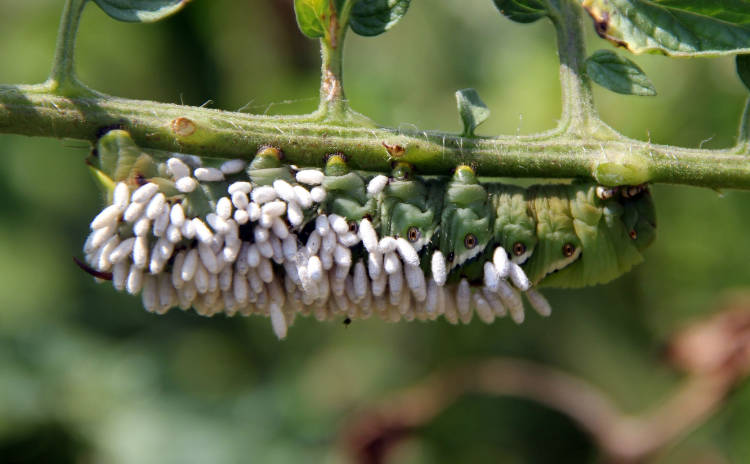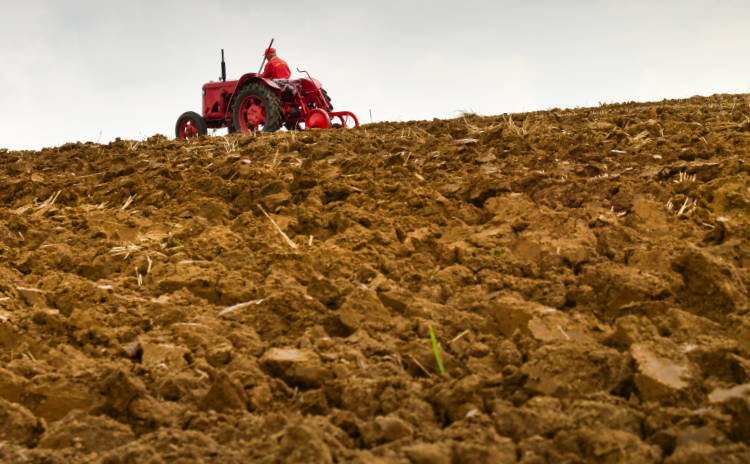Eco-logical Versus Eco-lunatic Farming
Eco-lunacy made economic sense back when nature’s abundance seemed infinite.
Here, in our first post, we set out to create a mutually exclusive, collectively exhaustive list of eco-logic dimensions, with each dimension presenting what works to make ecosystems abundant, the farming practices that do and that don’t leverage this knowledge.
It is our 50,000 ft synthesis of what we’ve learned from the writings of eco-logic pioneers, whether they call themselves ecologists, agro-ecologists, permaculturalists, or organic, holistic, grass, regenerative, restorative or carbon farmers. Subsequents posts will be much closer to the ground.
As it turned out, abundant natural ecosystems are tangles of interconnectedness, so we struggled some making the list items mutually exclusive. As for collective exhaustiveness, we haven’t as yet discovered any omissions, though we’ve realized our list is targeted at farming done on land, though we plan to cover farming done in water as well.
Mimiculture’s Six Dimensions of Farming Eco-logic
1 Layering

Eco-logic
Nature grows more abundant through the evolution of more and more species of plants and animals that thrive together through a mind-bogglingly complex set of looped inputs from and outputs to each other.
To improve farm performance gradually increase component interconnectedness, carefully observing what works and what doesn’t for the overall system. In particular, seek to minimize purchased inputs and minimize outputs that add no value, or worse, require additional disposal expense.
The more layers of mutually interdependent crops and livestock you successfully integrate, providing inputs to and receiving outputs from each other, the more crops that can be grown and livestock raised per unit of land. This thereby spreads risk of crop failure among more output types, and reduces costs of inputs and waste disposal.
Eco-lunacy
Clear away nature to cultivate at most a few crops or livestock types: never both. Focus your efforts on creating a linear process to produce outputs in as great a density and short a time span as possible.
Do whatever it takes including human labor, machine processing, external inputs (with prices you can’t control), cruelty to animals and producing toxic difficult-to-dispose-of waste.
Let government and the public at large relieve you of the increased risk of catastrophic crop failure that accompanies eco-lunatic methods, and responsibility for much of the collateral damage you cause to the atmosphere, downstream surface water, nearby properties, and antibiotic effectiveness.
2 Plant Type

Eco-logic
In nature annuals spring to life in bare soil, beginning a gradual succession as they are out-competed by an increasing abundance of perennials. Mimic nature: encourage this succession by managing a transition to abundant mostly crop-bearing perennials.
Perennials are better than annuals at collecting solar energy. They leaf out earlier (often at the previous year’s scale) and remain in leaf longer, lengthening their solar energy collecting season. Because they live longer than annuals many grow taller, thereby expanding the cubic area of foliage above a plot of land. Combining crop-bearing canopy trees, under-canopy trees, shrubs, vines and groundcover maximizes the aggregate amount of solar energy collected, the amount of CO2 take from the atmosphere — converted into carbon for plant mass growth and oxygen released back into the air — and the crops that can be sustainably grown on a unit of land. They can do this in part because some crop-bearing perennials are much better at producing crops in shade than are annuals.
Perennials also put down deep, extensive root systems that mitigate soil-erosion year-round, help them survive during droughts, and better absorb nutrition from the soil, reducing runoff of chemicals added by man to soil. Many such root systems develop long term symbiotic relationships with fungi in soil that increase their resilience and ability to extract nourishment from soil, from rock and even from each other.
Finally, perennials don’t require planting each year, avoiding annual soil disturbance as well as the costs of planting labor, fossil fuel consumption, equipment utilization and seeds.
Increasing the percentage of perennial crops will take a concerted effort extending beyond farmers. Better cultivars are needed, farm subsidy policies need to be reworked, and marketplace adoption of perennial competitors to annual crops needs to be encouraged.
Eco-lunacy
Grow annual crops. This way you can deplete your soil faster, because unlike perennials, annuals grow from scratch each year. They derive little benefit from maintaining soil nutrition were they grow, because they live for only one growing season and the seeds they produce will grow elsewhere, wherever wind and wildlife take them and sun, soil and water nurture them.
Create sterile crop cultivars that produce “suicide” seeds to lock farmers into buying seeds each year, rather than using what nature would otherwise have given them for free.
Feed herbivore livestock not on the perennial grasses with which they co-evolved, but instead on grain. This will tip the proportion of land used to feed them toward the production of annuals and away from perennials.
Lease farmland for short term periods, forcing those that farm the land to maximize near term yield. This not only makes it difficult for these farmers to transition to growing perennials that require a period of dormancy before they become mature enough to yield crops, it also gives them no incentive to invest in the long term health of land they have no guarantee they will be farming after their current leases are up.
3 Livestock Roles

Eco-logic
Organize things so livestock do useful “work” to sustain their environment by doing what comes naturally to them.
For example, raise cattle and poultry on perennial grassland to mimic patterns that occur on wild savannas. There herbivores bunch together to protect themselves from predators while grazing, moving to a different area each day. Birds swoop in a few days after the herbivores move on from an area to eat the nutritious and (to them) delicious fly larvae hatching in cowpies. In so doing they also sanitize and further fertilize the field.
Cattle and poultry carefully managed to be thus fed, and grasses to be thus “mowed”, fertilized, trampled and sanitized all thrive, even in dry climates. When properly managed, soil fertility, depth and carbon content in pasture land increases over time, as do herd densities that the increasingly fertile land can support.
Eco-lunacy
Raise poultry on concentrated feed lots (CAFOs), where they reach full weight faster, but add no value beyond the eggs they produce and the meat, bones, feathers and organs they become. Set things up so they can’t survive without having things done for them they’d rather do for themselves.
Initially raise cattle on pastures that are not managed to mimic wild savannas, resulting in low densities of animal on suboptimal pasture. In the last few months of their lives, “finish” them (bulk them up rapidly to slaughter weight) by feeding them grain in concentrated feed lots requiring labor and machinery to do things for them that they can do for themselves if raised on pasture.
4 Crop Protection

White wasps hatching out of, feasting on, and ultimately killing a tomato hornworm, thereby reducing the damage the hornworm does to tomatoes. Yikes!
Eco-logic
Learn about crops and livestock so you can enlist nature to help them thrive. Know not only their needs, developmental paths and vulnerabilities, but also those of other living beings that will directly or indirectly help or harm them. As shown in the photo above, enemies of a crop’s enemies can be a farmer’s friend.
Use the knowledge to nurture the helpful ones and deprive the harmful ones. Tactics can be as simple as, for example, selecting a time to plant a crop that does not align with the schedule of insects that are known to feast on it.
If nature needs human help to increase farmer success, use highly targeted, nature-mimicking means to achieve goals while minimizing collateral damage to farm and to downstream and downwind ecosystems.
Grow food in contexts isolated from pest insects such as in greenhouses, in cities, and in deserts, deploying natural enemies of the pests as a last line of defense.
Raise cattle and other herbivore livestock on pasture in densities that are mutually beneficial to animals and grass, avoiding the need for routine use of antibiotics on livestock.
Eco-lunacy
Separate crop rows and fields by bare soil that attracts weeds, then use broad spectrum herbicides to kill them.
Plant each crop in a large continuous area. This layout will allow each crop to be the biggest possible attractor of insects that will do it damage. Make sure to eliminate all nearby habitats for predators of the insects that chow down on your crops.
Apply both insecticides and herbicides in amounts that will result in runoff that will cause collateral damage, especially to rivers, lakes and ocean estuaries.
Become dependent on crops bred with resistance to a broad spectrum chemical herbicide, then use the herbicide to protect the plants, with the unintended but inevitable consequence of breeding weeds that become resistant as well. Take the huge risk that Big Ag will invent and perfect a new system in time to replace the failing one.
Routinely use chemical “bacteriacides” (we call them antibiotics) in low doses to speed weight gain and mitigate the risk of contagious disease in livestock stressed by cramped, unsanitary living conditions. As a result, speed the evolution and spread of bacteria resistant to more and more antibiotics, generating bacteria extremely dangerous not only to livestock but also to human health.
5 Soil Health

Eco-logic
Healthy soil is rich in carbon and teeming with earthworms, nematodes, protozoa, fungi, bacteria and arthropods. To keep it that way rotate crops, grow cover crops and add biologically rich amendments like compost, manure and seaweed extracts.
The various life forms in healthy soil help crop plants thrive by generating the nutrients they need, as well as help livestock and humans thrive by providing them with micronutrients in the crop-derived food they and we eat.
Carbon helps soil retain moisture. Plant material left to decompose in the field sequesters carbon taken by the plant from CO2 in the atmosphere, mitigating climate change.
Eco-lunacy
Leave soil unplanted in off-seasons, not only missing an opportunity to improve its health but also leaving it vulnerable to erosion.
Grow the same crop over and over, quickly depleting soil. To restore soil fertility, apply synthetic fertilizers to cropland at levels that kill off soil life. Crops grown in such dead but fortified soil may look robust, but are less micronutrient rich than crops grown in healthy soil, providing less nutrition to all who eat them.
Soil thus farmed loses its structure, with several negative consequences. It is more easily lost to rain and wind. It can’t retain as much water, thereby reducing crop drought tolerance. Applied fertilizer is more quickly carried downstream from runoff, causing damaging algae blooms. And carbon previously sequestered in the soil is carried away.
6 Water Use

Eco-logic
Before man learned to farm, plants and animals had no supplemental sources of water beyond what nature provided through rainfall, surface water, and springs.
To emulate nature minimize supplemental water use. Preserve as much water as possible through growing crops and raising animals suited to local available surface water, and by contouring fields to direct water from places that naturally get more of it to places that get less.
Use local extremes in water availability to test the hardiness of crops and crop varieties in local conditions. The fittest survive, thereby gradually increasing crop drought resilience.
If you do need to water at times of drought, use drip irrigation methods to avoid water loss due to evaporation.
Grow crops in greenhouses hydroponically or aeroponically, dramatically reducing their need for water, while recognizing the trade-offs involved. Greenhouses take outsourced resources to build and operate. Crops grown in water heighten levels of atmospheric CO2 and have lower nutrient levels than those grown in healthy soil.
Eco-lunacy
Routinely grow crops in locations that are too dry to support them without requiring supplemental watering.
Irrigate during daylight hours by spraying water into the air, thereby losing significant amounts of it to evaporation.
Take so much water from major rivers that they run dry before they reach their destinations, damaging food-producing aquatic ecosystems.
By using groundwater at a rate that will, in mere years or decades, cause aquifers to run dry, rob future generations of water that, in arid regions, took centuries to accumulate.
Apply salt-containing groundwater to cropland for so many years that its soil becomes too salty to be farmed.
Got Doubts?
Dear reader, perhaps you aren’t fully on board with transitioning to eco-logical farming? The most common concern we hear is that the eco-logical approach wouldn’t provide enough food for the human populations experts project for 2050. And even if it theoretically could, some worry that people wouldn’t pay higher prices for food grown or raised this way. Here’s how we think about these issues.
Growing enough food
- No one knows the earth’s carrying capacity for humans.
- We do know that it is dangerous to grow any species’ population level above carrying capacity, because it leads to ecosystem collapse and a plunge in the species population level.
- The bad news is that we humans are headed down this path right now: with today’s human population and eco-lunatic methods of food production and distribution, we are degrading the planet’s resources we depend on.
- The good news is that we can slow the rate of degradation and increase the rate of regeneration of resources to increase abundance. The faster we do this the greater the chance that we pull out of our nosedive in time to avoid a population crash.
- Our primary means of doing so is applying eco-logic to what we do, especially to growing crops, raising livestock, and processing and distributing food because our eco-lunatic methods crowd out so much abundance, and cause more damage than improvement to our soil, atmosphere, stores of fresh water, and levels of life-threatening pathogens.
- Only once we slow, then reverse our descent, we will learn how many of us can sustainably fit on the planet.
Food prices
- Part of the current price differential between more eco-logical “organic” food and more eco-lunatic “conventional” food is caused by externalities that are not factored into food prices. The more these can be factored in, the more pricing will favor eco-logically farmed food.
- Another part of the price differential is in the efficiency of highly automated large scale conventional production vs. manual small scale organic production. As technologies become smarter, cheaper and more distributed at least some of this difference may erode.
- If resources important to eco-lunatic farming become more scarce, and their prices therefore rise, farming this way will become more expensive.
- Just as we have been surprised that sustainable wind and solar power are turning out to be less expensive than burning fossil fuels, so too may we be surprised that food grown eco-logically will turn out to be less expensive than food grown using eco-lunatic methods.